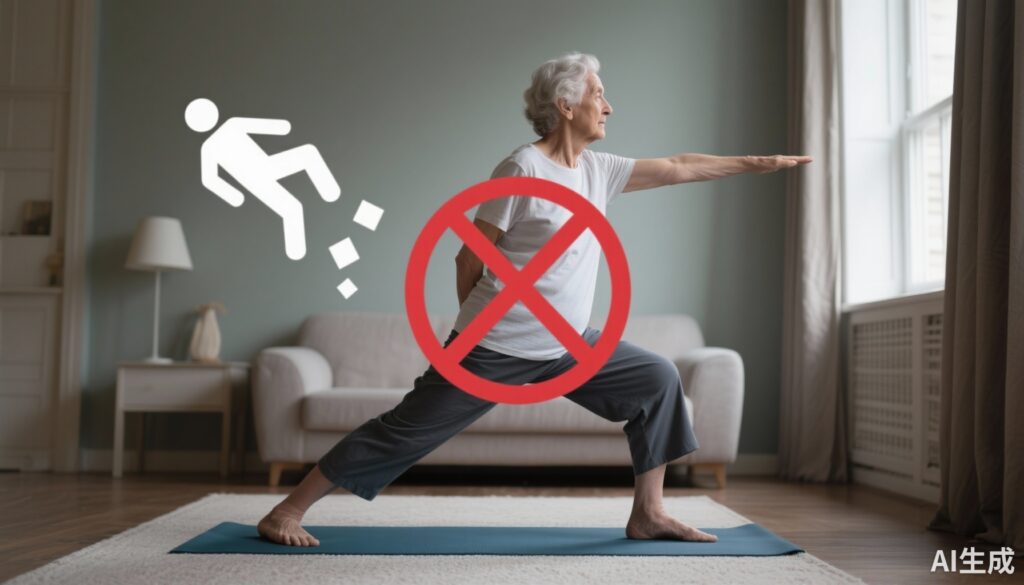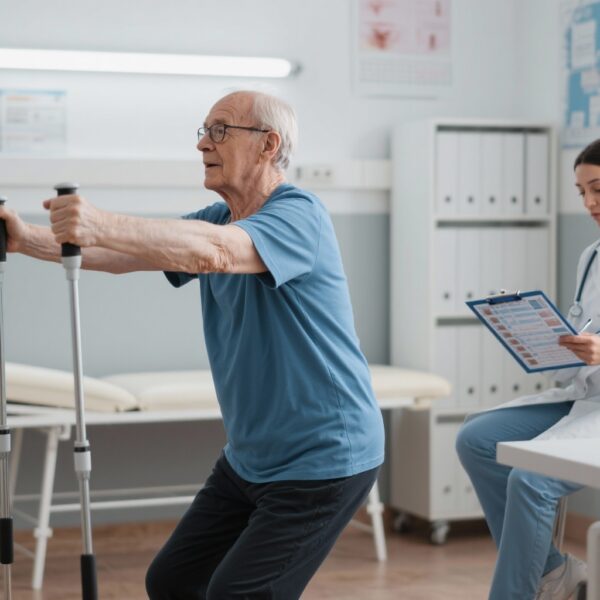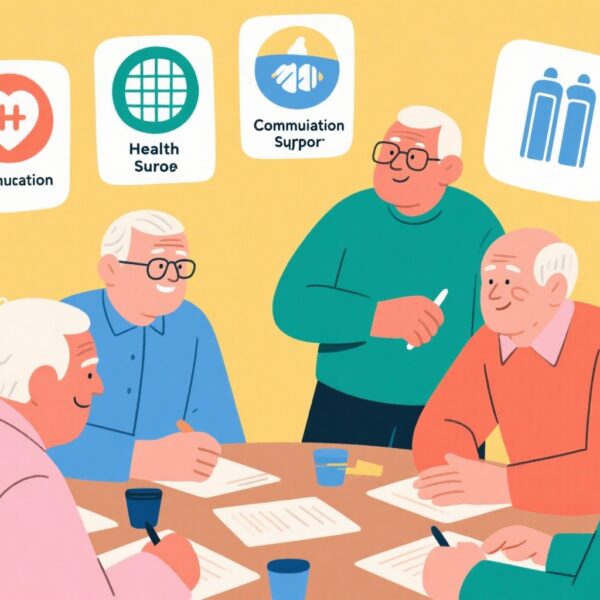Highlight
- The Iyengar yoga-based exercise program led to an unexpectedly higher fall rate compared to seated relaxation yoga in older adults.
- Despite increased fall risk, participants showed improved physical activity levels, balance confidence, and goal attainment.
- The study is the largest to date rigorously assessing yoga’s direct impact on falls, conducted as a pragmatic randomized controlled trial.
- Findings suggest current Iyengar yoga protocols may require modifications incorporating dynamic balance and fall prevention elements before being recommended for fall prevention.
Study Background
Falls represent a critical public health challenge for older adults, with one in three adults over 65 experiencing a fall annually, often resulting in serious injuries, disability, and increased mortality. Exercise programs focusing on balance and strength have established effectiveness in reducing falls. Recently, yoga has gained considerable popularity and some evidence supports its benefit in improving balance, mobility, and mental wellbeing components vital for fall prevention. However, yoga’s direct influence on fall risk has not been rigorously tested in large-scale randomized trials. This study addresses this gap by comparing an Iyengar yoga-based exercise program with a seated yoga relaxation program to determine the effect on fall incidence among older community-dwelling adults aged 60 years and older.
Study Design
This pragmatic, two-arm, parallel randomized controlled trial recruited 700 older adults (mean age 67 years, 81% female) living independently in the Australian community who were not practicing yoga prior to study enrollment. Participants were randomized 1:1 to either an Iyengar yoga-based exercise intervention or a control seated relaxation yoga program.
The intervention group received a comprehensive program consisting of 80 supervised 1-hour sessions twice weekly over 12 months, supplemented by encouragement to practice yoga independently two additional days per week. Sessions mainly occurred online due to the COVID-19 pandemic. The program emphasized postural and balance exercises characteristic of Iyengar yoga.
The control group attended two 1-hour workshops focusing on seated breathing and stretching relaxation techniques, serving as an active control for attention and engagement without dynamic balance training.
The primary endpoint was the rate of falls per person-year within the 12-month period. Secondary outcomes included mental wellbeing, overall physical activity, quality of life, balance self-confidence, physical function, sleep quality, pain, and goal attainment—all assessed using validated self-report scales and objective measures.
Allocation concealment was maintained for outcome assessors, though participants and instructors were unmasked given the nature of the interventions. The protocol was prospectively registered with the Australian New Zealand Clinical Trials Registry (ACTRN12619001183178).
Key Findings
Contrary to initial hypotheses, the Iyengar yoga intervention yielded a significantly higher fall rate compared to the seated yoga relaxation control: 0.87 versus 0.64 falls per person-year, corresponding to an incidence rate ratio (IRR) of 1.33 (95% CI 1.01–1.75, p=0.044).
While no serious adverse events were reported, six participants in the intervention arm experienced musculoskeletal-related adverse events related to yoga practice.
Despite the increased fall rate, significant benefits emerged in several secondary outcomes favoring the intervention group. Participants demonstrated increased planned physical activity by a mean of 0.96 hours per week (95% CI 0.43–1.49; p<0.0001), improved balance self-confidence measured by a mean difference of 2.94 points (95% CI 0.60–5.28; p=0.014), and enhanced goal attainment mean difference of 0.60 (95% CI 0.26–0.94; p=0.0006).
No significant differences between groups were observed for mental wellbeing, quality of life, physical function, sleep quality, or pain.
Expert Commentary
These findings challenge assumptions that balance-focused yoga universally lowers fall risk in older adults. The unexpected increase in falls could reflect that the physical demands and dynamic postures incorporated in Iyengar yoga may pose an initial increased hazard without sufficient integration of tailored fall prevention strategies.
Notably, the study was conducted during the COVID-19 pandemic with largely online delivery, which might have affected participants’ supervision quality and adherence, potentially influencing safety.
Experts recommend cautious interpretation and emphasize the need to tailor yoga interventions specifically for fall prevention. This could involve integrating proven fall prevention strategies such as dynamic balance exercises, strength training, and environmental hazard education.
Limitations include the predominantly female and relatively young (mean 67 years) cohort who were already community-dwelling and independently mobile, which could limit generalizability to higher fall-risk populations.
Conclusion
This rigorously conducted pragmatic randomized controlled trial demonstrates that an Iyengar yoga-based exercise program, in its current form, is associated with a paradoxical increase in the rate of falls among older adults, despite improvements in physical activity and balance confidence.
Clinicians and public health practitioners should avoid recommending this specific yoga intervention for fall prevention at present. Further research should focus on modifying yoga protocols to incorporate dynamic balance and established fall prevention components to optimize safety and efficacy.
This study highlights the critical need for evidence-based evaluation of popular exercise modalities like yoga before widespread adoption in fall prevention strategies.
Funding and Trial Registration
The study was supported by the National Health and Medical Research Council. Trial registration number: ACTRN12619001183178.
References
Oliveira JS, Sherrington C, Lord SR, Camara GC, Colley S, West CA, et al. The effect of an Iyengar yoga-based exercise programme versus a seated yoga relaxation programme on falls in people aged 60 years and older (SAGE): a pragmatic, two-arm, parallel randomised controlled trial. Lancet Healthy Longev. 2025;6(9):100749. doi:10.1016/j.lanhl.2025.100749. PMID: 41005344.
Sherrington C, Fairhall NJ, Kwok WS, Lord SR, Close JCT. Evidence on physical activity and falls prevention for older people: A systematic review to inform clinical practice guidelines. J Clin Med. 2020;9(1):96.
Gillespie LD, Robertson MC, Gillespie WJ, et al. Interventions for preventing falls in older people living in the community. Cochrane Database Syst Rev. 2012;9(9):CD007146. doi:10.1002/14651858.CD007146.pub3.



